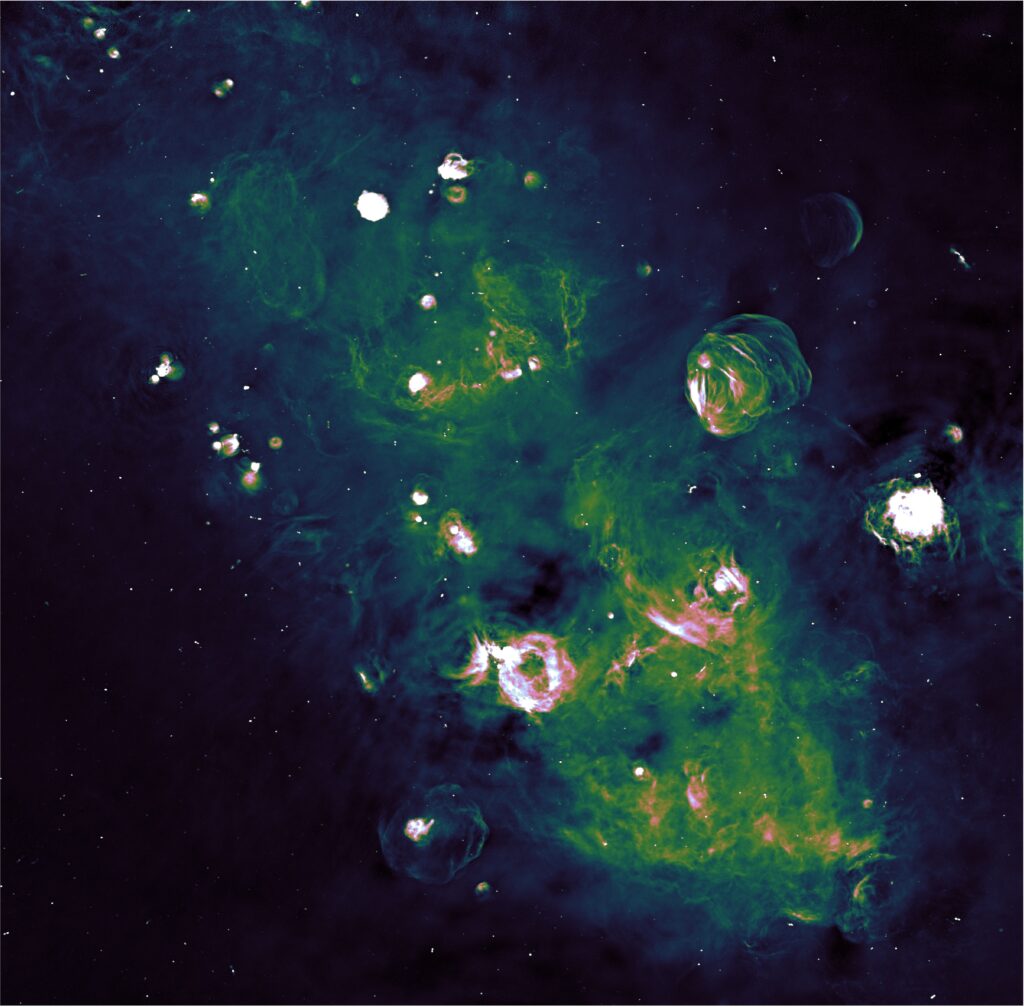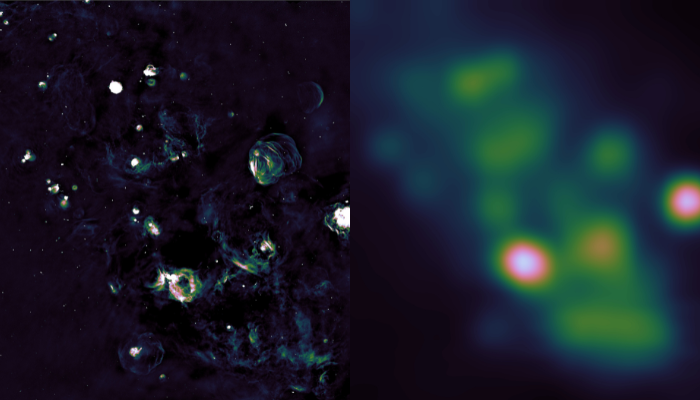Australian astrophysicists have published the first joint images taken by the ASKAP radio telescope and the Parkes Observatory. They demonstrate one section of the Milky Way filled with many previously unknown supernova remnants.

Existing theoretical models suggest that, taking into account the age and density of the stellar population of the Milky Way, there should be about five times more supernova remnants in it than astronomers currently know. To find the missing supernovae, Australian researchers used the ASKAP radio telescope and the Parkes Observatory. The first is characterized by the ability to obtain images with a high degree of detail, the second has the ability to take wide areas of the sky.
Combining the images of radio telescopes, astronomers have obtained an image covering about 1% of the plane of the Milky Way. It demonstrates the emission of hydrogen gas associated with the processes of the birth of new luminaries, as well as hot gas bubbles left after the death of the luminaries. In total, astronomers have identified over 20 potential supernova remnants in a joint image of ASKAP and the Parkes Observatory. Before that, they were aware of only seven similar structures in this region.
It is curious that individually neither ASKAP nor the Parkes Observatory would have been able to see the remnants of supernovae. Their detection became possible only thanks to the coordinated work of radio telescopes.

In the future, the researchers intend to map the entire Milky Way with the same level of detail. They hope this will allow them to identify at least 1,500 more previously unknown supernova remnants.
Earlier we told how astronomers photographed the remnant of a supernova observed in 1181.
According to https://www.mq.edu.au
Follow us on Twitter to get the most interesting space news in time
https://twitter.com/ust_magazine

